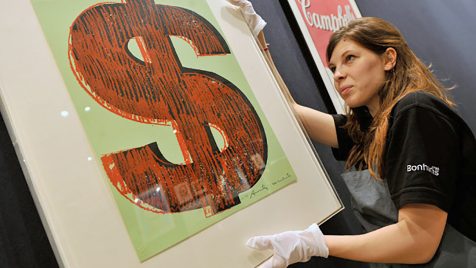
Student Discussions
This week in my online summer class we’re discussing Free Culture, Intellectual Property, Creative Commons, and Social Production. The students have thought about a wide range of issues. For a lot of students the days of bittorrenting files are over. Today it’s more about streaming services. Free, subscription, or supported in other ways, it’s streaming.
Some students have also noted that they have 2,000 songs. And that if they’d had to pay US$1 each, that’d be the impossible, and insane, amount of US$2,000!
It made me think back to last semester in my F2F class. Each week I’d give them two artists to compare and contrast. Usually fine artists. One week I gave them Gianni Versace and Alexander McQueen. A few students had powerful analyses of their work, with one offering the insightful idea:
With Versace, the model wears the clothes, but with McQueen the clothes wear the model
and then he offered a further explanation that his group felt that no matter how extravagant Versace might be, his work always seemed to serve the purpose of making the model beautiful. By contrast they didn’t believe that McQueen was concerned with how the model looked. That it was more about his own, intense, fashion-architectural pursuit.
Insights like this were rare. So many students spent the discussion marveling at how expensive the clothes were. They commented that no sane person would ever spend this much money.
I couldn’t help but think that anything by Versace, or McQueen, as well as most paintings hanging in art galleries in Los Angeles, cost more than the US$2,000 that no sane person would spend on a music library.

Starving Students & Blue Chip Artists
Students are perpetually starving and so the idea that they don’t want to spend thousands on music collections, designer clothes, or collectible art, isn’t surprising.
But is there something more?
For this Millennial generation The Internet has democratized many things. Almost everything is streamable today, and in some senses therefore equal. Even if you’ve never met Kim Kardashian or Taylor Swift there is so much access to the moments of their lives that you might come to feel like you know them.
The most popular YouTubers have so many followers that they begin to take on some of the status of old media broadcasters. But YouTube and other contemporary platforms are less about the top-down dissemination of ideas that was the 20th century, and more about a 21st century bottom-up exchange of ideas.
A YouTube “scandal” series of videos with accusations and counter-accusations on who is a real vegan and who is a fake vegan may not rise to the level of a painting like Picasso’s Guernica. But it is a living dialog. Mostly between young people. And to be fair, most paintings don’t rise to the level of Guernica.

Scarcity & Abundance
Of course college students can’t afford dresses by Gianni Versace or Alexander McQueen! But maybe the larger point is that we live in a world of ubiquitous, zero marginal cost, communications media. Maybe the singular, celebrated, valuable-because-it-is-scarce, art object of yore, just isn’t relevant to this time of abundance.
In the past we treasured things because they were scarce. Could it be that today a thing that is not abundant (or sustainable? (or fungible?)) is obscene?

Comments? Questions? What great art did you see, make, or experience today?